My previous post was about the Mastering Inpainting course with James Bernstein. During the four days it lasted, we talked, or rather we heard, about historic and contemporary pigments, mediums, colors, additives, modifiers, etc., but not too much was said about brushes, their varieties and historical background.
The history of brushes is somewhat obscure and it is kind of difficult to find information about them, their fabrication, and their evolution from ancient times to nowadays.
Supposedly, the first brushes were manufactured at the same time as the first artistic creations, the cave paintings, but there are no known remains of them whatsoever. To the best of my knowledge, the first known brush dates back, between 1390 and 1352 B.C.; it was made out of palm fiber, used with red paint, and came from an archaeological excavation in Thebes, Egypt. (fig.1). Also, one of the first color palettes (resembling a watercolor palette) was found, along with some brushes, in the Egyptian tomb of princess Meketaten, daughter of Nefertiti and Akhenaton, in Thebes as well (fig. 2). It was made out of ivory, contained red, yellow, and black pigments and the brushes were made out of rush that was macerated at one end in order to separate the fibers to produce a suitable tuft.
[/mp_text] [/mp_span] [/mp_row] [mp_row] [mp_span col="12"] [mp_row_inner] [mp_span_inner col="6"] [mp_image id="3427" size="full" link_type="lightbox" link="#" target="false" caption="true" align="left"] [/mp_span_inner] [mp_span_inner col="6"] [mp_image id="3428" size="full" link_type="lightbox" link="#" target="false" caption="true" align="left"] [/mp_span_inner] [/mp_row_inner] [/mp_span] [/mp_row] [mp_row] [mp_span col="12"] [mp_text]It is in China where the paint brush evolves into something very similar to what we use nowadays, consisting in a gathering of animal hair or bristles (occasionally also feathers) set in a bamboo handle (or sometimes a more exquisite material, like jade or ivory) by the means of a natural resin that acts as an adhesive between the bristles and the handle.
[/mp_text] [/mp_span] [/mp_row] [mp_row] [mp_span col="12"] [mp_row_inner] [mp_span_inner col="4"] [mp_text]In Western culture, until the late eighteen century, artists prepared their own brushes. One of the first written sources about how to make them is Cennino Cennini’s treatise “Il Libro dell Arte”. Written around the turn of the 15th century, in it he dedicates two chapters to provide precise and precious particulars about brushes. He talks about two types of bristles, squirrel and hog, and gives details on how to make the brushes, the different softness that can be obtained depending on the part of the animal where the bristles are taken, how to fasten them together with a waxed cord, and how to use the quills (vulture, goose, hen or dove) depending on the size of brush wanted (fig. 3). In relation to hog bristles, he explains that the best way of softening them is to use them first in a big brush, to whiten walls; and after the softening process, release the bristles again to make small brushes with different shapes, flat or pointed. He also gives details on how to tie the tuft and attach it to a maple, larch or walnut stick.
[/mp_text] [/mp_span_inner] [mp_span_inner col="4"] [mp_image id="3461" size="full" link_type="lightbox" link="#" target="false" caption="true" align="left"] [/mp_span_inner] [mp_span_inner col="4"] [mp_image id="3463" size="full" link_type="lightbox" link="#" target="false" caption="true" align="left"] [/mp_span_inner] [/mp_row_inner] [/mp_span] [/mp_row] [mp_row] [mp_span col="12"] [mp_row_inner] [mp_span_inner col="12"] [mp_text]After Cennini, there are several other sources that talk about brushes. A very complete one is Antonio Palomino’s “Museo Pictórico y Escala Optica”. Published around 1720, it gives a large list of materials commonly used to make brushes (called “pinceles” in Spanish) as well as detailed DIY instructions. The bristles recommended in this treatise are boar, dog, goat, fitch, squirrel, cat tail, and mongoose. For the quills he names duck for median sized brushes, dove, turtledove, and partridge for the small ones, thrush, and redwing for the smallest and raven and rook for the largest. Finally, for the handles, he recommends the use of pine, poplar, pear, walnut, mahogany, cedar or ebony. In relation to the instructions for making them, Palomino gives explanations about how to arrange the bristles, how to tie them up and make the knots with waxed cord or twine, providing as well a description of the method for shaping a pointed pencil which is, with small variations, still in use (see video). He also describes how to temporarily increase the flexibility of the quills to fit the tuft and how to shape brush handles so that a large group of brushes can be held in one hand easily.
[/mp_text] [/mp_span_inner] [/mp_row_inner] [mp_row_inner] [mp_span_inner col="12" classes=" motopress-space"] [mp_space] [/mp_span_inner] [/mp_row_inner] [/mp_span] [/mp_row] [mp_row] [mp_span col="12"] [mp_video src="https://youtu.be/B4Qf0ZEEGvA"] [/mp_span] [/mp_row] [mp_row] [mp_span col="12"] [mp_row_inner] [mp_span_inner col="12" classes=" motopress-space"] [mp_space] [/mp_span_inner] [/mp_row_inner] [mp_row_inner] [mp_span_inner col="12"] [mp_text]Probably, all these detailed instructions were well known in the art field and they were the ones used by most of the painters with slight variations to each one’s liking.
[/mp_text] [/mp_span_inner] [/mp_row_inner] [mp_row_inner] [mp_span_inner col="12"] [mp_grid_gallery ids="3429,3430,3431,3432,3433,3434,3435,3446,3437,3438,3439,3440" columns="4" size="thumbnail" link_type="lightbox" target="false" caption="true"] [/mp_span_inner] [/mp_row_inner] [/mp_span] [/mp_row] [mp_row] [mp_span col="12" classes=" motopress-space"] [mp_space] [/mp_span] [/mp_row] [mp_row] [mp_span col="6"] [mp_row_inner] [mp_span_inner col="12"] [mp_image id="3447" size="full" link_type="lightbox" link="#" target="false" caption="true" align="left"] [/mp_span_inner] [/mp_row_inner] [mp_row_inner] [mp_span_inner col="12"] [mp_text]By the end of the eighteen century, brush manufacturing companies appeared in France and later in Germany, and by the beginnings of the 1800’s the metal ferrule is introduced in the fabrication of brushes. At that moment, the metal most frequently used for the ferrules was tin and occasionally albata (an alloy of nickel, copper, and zinc); nowadays, a nickel plated brass ferrule is commonly used. Thanks to the pliability of the metal, a pathway for new brush shapes is opened (fig. 5.), giving the artist an increased flexibility when choosing brushes. Both, ferrule and quill coexist up to date.
Also, it is at this very moment that the lead pencil appears for the first time in the market. Until then, the word pencil was used exclusively to designate small pointed brushes made of squirrel or sable hair. As it can be seen by looking at artists’ material catalogs, the word pencil was still used for this type of brushes, at least for another century.
In these catalogs, the most recurrent bristles are hog, and sable, but other types, like squirrel, badger, ox, bear, pony, etc, are also used. As a curiosity, camel bristles are mentioned in almost all of them. However, camel hair was never used, and this denomination is only the trade name for brushes made usually of squirrel hair. Also in some catalogs double quill brushes are offered. Even if they are not mentioned in the sources, these types of double tip brushes (figs. 6 and 7.) were probably somewhat frequent.
[/mp_text] [/mp_span_inner] [/mp_row_inner] [/mp_span] [mp_span col="6"] [mp_row_inner] [mp_span_inner col="12"] [mp_image id="3457" size="full" link_type="lightbox" link="#" target="false" caption="true" align="left"] [/mp_span_inner] [/mp_row_inner] [mp_row_inner] [mp_span_inner col="12"] [mp_image id="3455" size="full" link_type="lightbox" link="#" target="false" caption="true" align="left"] [/mp_span_inner] [/mp_row_inner] [/mp_span] [/mp_row] [mp_row] [mp_span col="12"] [mp_row_inner] [mp_span_inner col="12"] [mp_text]In relation with how to care for the brushes, some authors recommend dipping them in a non drying oil (spike or olive) at the end of each session so that they don’t get dry, maintaining the flexibility. It is also recommended to clean well these non drying oils before the next session, to not interfere with the drying oils in the painting. Another important recommendation is to never leave them resting on the tuft, soaking in water or any other solvent.
Some other sources suggest to wipe them off with a lint free rag, from the ferrule towards the point and then proceed with brush cleaner or mild soap and cold water, avoiding the use hot water or detergents because natural bristles will lose their natural oils, and with them, their spring and flexibility. Another usual suggestion is to gently swirl the brush in the palm of the hand and keep washing and rinsing until the foam is completely clean, following with a thorough rinse. To remove the excess water from the head, the brush should be shaken vigorously, finalizing by reshaping the head and allowing it to dry completely.
Artists’ material catalogs from the 1800’s offer manufactured stands to keep or dry the brushes upside down (figs. 8 and 9). There are four main reasons for drying the brushes that way. First, because with the tuft up any remnants of paint will slide towards the ferrule, making the heel thicker, causing the brush to lose its shape; the most common cause of a brush no longer pointing is the buildup of pigment particles in the base of the brush. Secondly, because the water remaining in the tuft will slide towards the inside of the ferrule and cause the degradation of the cord that ties the hair tuft (or adhesive that holds the bristles together) and will eventually become loose. Also, the water running into the ferrule can cause its oxidation which will also oxidize the bristles, ruining the brush. And lastly, drying it upside down will shorten the drying time because gravity will naturally help the water to get out of the tuft.
[/mp_text] [/mp_span_inner] [/mp_row_inner] [mp_row_inner] [mp_span_inner col="7"] [mp_image id="3442" size="full" link_type="lightbox" link="#" target="false" caption="true" align="left"] [/mp_span_inner] [mp_span_inner col="5"] [mp_image id="3443" size="full" link_type="lightbox" link="#" target="false" caption="true" align="left"] [/mp_span_inner] [/mp_row_inner] [/mp_span] [/mp_row] [mp_row] [mp_span col="12"] [mp_text]
All in all, brushes are the most important tool for painters, and one of the most important for art conservators. A good brush can be a big help to perform the job properly, and getting to know how they are made, the different qualities, and the proper cleaning and drying routines, will significantly extend their useful life and will save you a substantial amount of time and money.
Bibliography
"Mural or Monumental Decoration: Its Aims and Methods. Comprising Fresco, Encaustic, Water-glass, Mosaic, Oil Painting. With an Appendix." (Book, 1869) [WorldCat.org]. Web. 01 May 2016.
Carlyle, Leslie. The Artist's Assistant: Oil Painting Instruction Manuals and Handbooks in Britain, 1800-1900, with Reference to Selected Eighteenth-century Sources. London: Archetype Publications, 2001. Print.
Full Text of "How Artists Materials Are Made" Web. 01 May 2016. Free content The Art Amateur, Vol. 13, No. 1 (Jun., 1885), p. 19 [Journal]
Full Text of "[Catalog]" Web. 01 May 2016. by N. Davies Cotton (Boston, Mass.)Published 1845 ca. Topics Artists' materials--Catalogs, Stationery--Catalogs.
Gettens, Rutherford J., and George L. Stout. Painting Materials: A Short Encyclopaedia. New York: Dover Publications, 1966. Print.
"Price List of Artists' Materials. : Janentzky & Co. (Philadelphia, Pa.) : Free Download & Streaming : Internet Archive." Internet Archive. Web. 01 May 2016.
Mayer, Ralph, and Steven Sheehan. Collins Dictionary of Art Terms and Techniques. London: HarperCollins, 1993. Print.
Osborn, Laughton, and Pierre Louis Bouvier. Handbook of Young Artists and Amateurs in Oil Painting Being Chiefly a Condensed Compilation from the Celebrated Manual of Bouvier, Appended. A New Explanatory and Critical Vocabulary. New York: Wiley and Putnam, 1845. Print.
Palomino De Castro y Velasco, Antonio, and Ceán Bermúdez Juan Agustín. Museo Pictórico Y Escala Óptica. Madrid: Aguilar, 1988. Print.
"Writing Palette and Brushes of Princess Meketaten | New Kingdom, Amarna Period | The Met." The Metropolitan Museum of Art, I.e. The Met Museum. Web. 01 May 2016. http://www.metmuseum.org/art/collection/search/544694
"Paint Brush | New Kingdom | The Met." The Metropolitan Museum of Art, I.e. The Met Museum. Web. 01 May 2016. http://www.metmuseum.org/art/collection/search/551903?sortBy=Relevance&ft=brushes&pg=8&rpp=20&pos=156
[/mp_text] [/mp_span] [/mp_row]

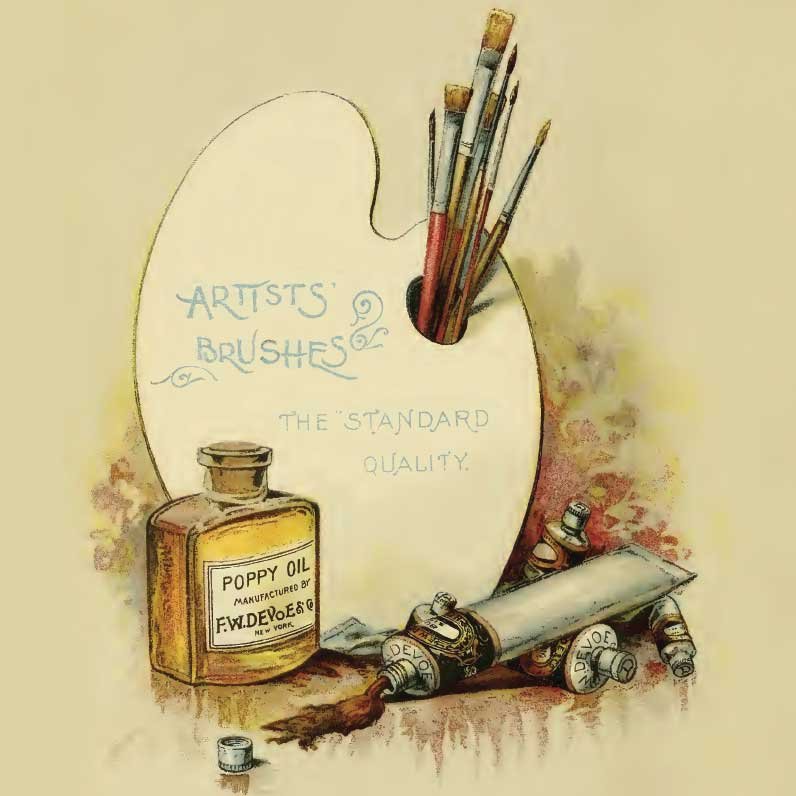
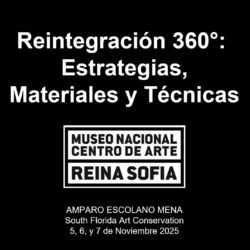
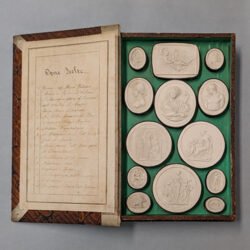
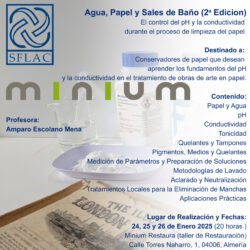
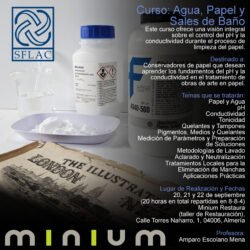
2 Responses